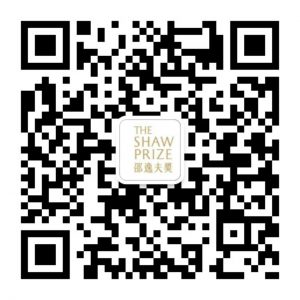I was born in Nagoya, Japan, in 1959, and soon moved to Yokohama, Japan, and grew up there. My father liked books, and so in my house there were always many books. Naturally, I liked reading from a very early age. While I was in elementary school and middle school, I spent a lot of time reading books of many kinds, including science books. I read a lot about Physics and Astronomy. After going to high school, Mathematics became my favorite field. I did not ask people to guide me on what books to read. Instead, I went to bookstores, looked at the prefaces of books, and tried to guess the contents of the books (high school student can buy only a few of them). When I passed the entrance examination to University, I was so happy that I would now have plenty of time to read books. I started reading Mathematics. In the first few months, I read van der Waerden on (abstract) algebra and Kelley on general topology. I continued algebraic topology, algebraic geometry and differential topology (I think my guess at finding books to read was not so bad, as I found van der Waerden and Kelley without instructions). When I was in my third year and became an undergraduate student in the Mathematics department, on the first day, I went to the library of the department and was very happy to find many Math Journals that I wanted to read but could not access.
At the beginning of my graduate course, it was hard to decide what subject to study. One day, Yamaguchi (who would later become my collaborator) came to give a seminar talk on Riemannian geometry. He explained an interesting paper by Gromov. After his talk, Yano (one of the members of a topologist group at Tokyo University) asked me whether I was interested in this topic and lent me several preprints. In the next student seminar, I explained one of the preprints he gave me. My Master’s thesis was on related topics. Soon after, my research area became “collapsing Riemannian manifold”, a subject developed much by Gromov and Cheeger. After writing several papers on this topic (some with T Yamaguchi), I had an opportunity to stay at the Max Planck Institute for Mathematics in Bonn. It was a great place for me. There was nothing to do there other than doing research. So, I decided to read papers and books on new subjects. One of them is gauge theory. I spent a lot of time just reading about gauge theory. One important event at the Max Planck in Bonn was a conference called Arbeitstage. In that year (1986), there was a talk by Floer on Arnold conjecture and Floer homology. This would later become my research area. However, I did not understand his talk at all (actually, his talk was also related to gauge theory, but I was not smart enough to understand such a relation).
A few years later, I spent a year at the University of Maryland (invited by K Grove). I was still studying Riemannian Geometry and wrote several papers in Maryland. At the same time, I wrote my first paper on gauge theory.
After I came back from Maryland, I was able to communicate with many mathematicians and a few physicists who were interested in novel communication between mathematics and elementary particle physics. For example, conformal field theory was one of the topics they were interested in. During those days, many things were happening in that area. Seiberg-Witten came and showed a new method to apply gauge theory to topology. Mirror symmetry was discovered. A relation between string theory and Gromov–Floer theory (that is, theory of pseudo-holomorphic curves in symplectic geometry) was found. My main interest in Math was still in gauge theory. I was interested in gauge theory Floer homology (which is defined for 3-dimensional manifold) and its version for 3-manifold with boundary. In a conference at the University of Warwick in 1992, Donaldson proposed that it was related to Lagrangian Floer homology (in symplectic geometry). I thought about it for several months and found an idea that gauge theory Floer homology of 3-manifold with boundary should be a module over certain category defined by Lagrangian Floer theory. A few months later, I gave a talk on it at a conference in Japan called the Taniguchi conference. Kontsevich was among the audience and soon found that the category I mentioned was related to Mirror symmetry. It was 1993, and that was more than 30 years ago. Those programs were very successfully realized or on the way to being realized, I think. Together with many collaborators (Oh, Ohta, Ono and etc.), a category associated with a symplectic manifold (using Lagrangian Floer theory) is now constructed as rigorous Mathematics and is applied for various purposes, including Mirror symmetry. To realize it, we needed to understand the singularity of the moduli space of pseudo-holomorphic curves. We developed a method called virtual fundamental chain for this purpose.
The project to realize its relation to gauge theory Floer homology was stopped for a while (during 1996-2017) for me, but I have now come back to it together with young collaborators Daemi and Lipyanskiy. I am very happy to say that there are still so many things to be realized and to be developed that I can enjoy working on them for another 30 years.
21 October 2025 Hong Kong
